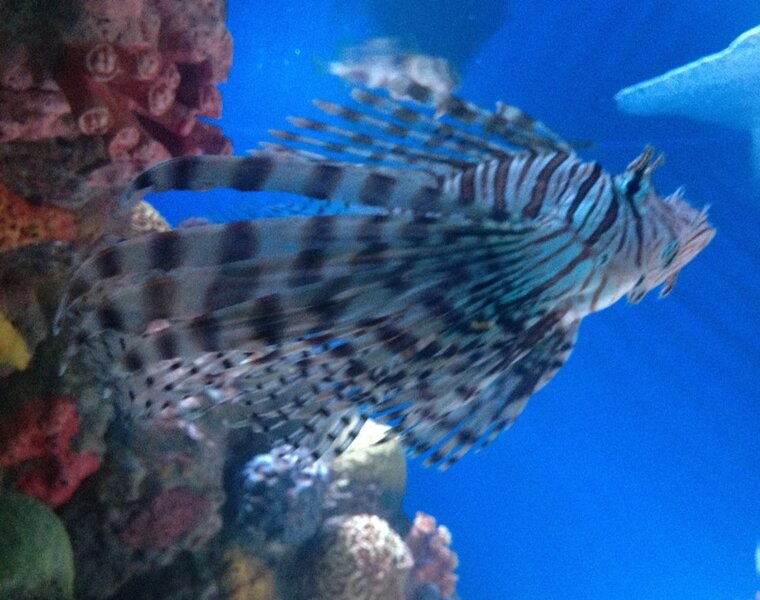Lionfish invasion: An unabated siege of the Atlantic
Loading...
Concerns are mounting that the venomous lionfish, an invading fish in the Atlantic Ocean, is enjoying a population explosion in its conquered waters, despite vast efforts to fish out the destructive species, CNN reported.
The news comes just three months after a team of researchers from a number of US universities reported that the lionfish population was booming in the deep waters off the Florida coast, as the Christian Science Monitor reported in July. The find suggested that broad efforts to control the lionfish population had not been nearly as successful as had been hoped. The lionfish, growing to unusual sizes, appeared to be continuing to gorge itself on the local fish, becoming fatter, stronger, and an ever more intractable problem.
It’s not quite known how lionfish, native to the Indo-Pacific, ended up in the Atlantic. Some scientists propose that the fish were introduced there in the 1980s, when aquarium owners near southern Florida dumped just a few fish into the water. It wouldn’t be surprising if a whole kingdom could have sprung from just a few fish: a single female lionfish can plunk down 2 million eggs per year, all bundled up in gelatinous blobs of some 12,000 to 15,000 eggs that then float through the ocean, waiting to hatch and to feed.
In recent years, Floridians have waged a culinary war of sorts against the lionfish: The Reef Environmental Education Foundation sells a cookbook full of lionfish recipes; it offers a list of local restaurants that cook up the fish; and its conferences on the lionfish invasion have ended with tastings of lionfish dishes, the Christian Science Monitor reported in July.
This summer, though, researchers reported finding large populations of lionfish at some 300 feet deep in the Atlantic, the Monitor reported. The fish, facing hooks and nets near the Florida coast, seemed to have retreated into a deep-water refuge from which the population might again re-siege the coast, the researchers told the Monitor. In other words, the problem had not disappeared. It had moved.
Lionfish are graceful, elegant fish, their striped plumes spreading through the water like fireworks against the skies or a dragon shadow puppet on a wall. Here in Boston, the fish are stars of The New England Aquarium, vain models on its advertisements throughout the subway system, colonizing billboards will aplomb.
But the fish are enthralling not just for their stunning looks – they are stunningly dangerous. The lionfish’s beautiful spines are full of venom, like Kate Barlow’s poison-tinged lipstick. They are also formidable eaters: a lionfish can grow up to 47 cm in length and can consume prey up to half their size. That puts about 70% of the fish population within their diet, the Christian Science Monitor reported this summer.
In the Atlantic, lionfish enjoy an outsider’s advantage, easily reigning over an ecosystem that is not prepared to fight back. Since the lionfish have no known natural predators in the Atlantic (besides fisherman, chefs, and diners), the fish just eat, and eat, and eat. Studies have shown that at least 40 species of fish in the Atlantic have dropped in ranks since the lionfish was introduced into their ecosystems, Stephanie Green, lead scientist on this summer's project and a post-doctoral associate at Oregon State University’s Hixon Lab, to the Monitor in July.
“There is strong evidence that the lionfish is having negative effects on the native population,” Ms. Green told the Monitor. “We don’t see any signal that anything is controlling the lionfish population.”
Researchers are still developing new solutions to the lionfish problem, including innovative deep sea traps that could single out the lionfish for capture, the Monitor reported.






